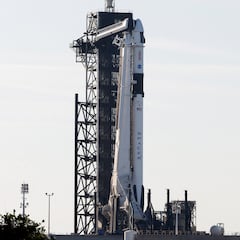NASA unveils new spacesuit for Artemis Mission: first woman to walk on moon to wear innovative design
The future of lunar exploration: a look at the high-tech features of NASA’s new spacesuit for the Artemis Mission and its role in establishing a sustainable presence on the moon and beyond

NASA and Axiom Space have revealed the new spacesuit to be worn by the first astronauts who will set foot on the Moon in 50 years. The Artemis 3 mission is scheduled for launch in 2025 and will include a woman and a non-white person in the crew. The lunar south pole is a strategically important area and its exploration is being disputed by the great space powers, including the US and China. There is the possibility there is frozen water in the perpetually shadowed areas. The water would be essential to sustain future colonies and would also be used to make fuel.
New spacesuits for solar system exploration
The new spacesuits, developed by Axiom Space for $228 million, have numerous features that will help with the exploration of the lunar south pole and, further down the line, Mars. They will be more like individual spacecraft, entered through a rear hatch, and will contain all the necessary systems to keep explorers comfortable and safe from temperatures, radiation, and lunar regolith. The suits also have powerful headlights that will allow astronauts to see around them even where there is backlighting as they traverse the terrain and pick up as much as 100 kg of rocks. The suits have more natural movement than their predecessors, including flexible-soled boots in the style of hiking shoes.
Related stories
NASA announced 13 possible south pole locations as a landing site for the 2025 mission last summer. Each of the marked regions measures approximately 15 kilometers on each side, and within them, the landing site is located with an accuracy of 100 meters. All the points are about six degrees from the south pole, they are elevated areas and therefore well-lit, and they are relatively close to shadowy craters where there may be ice.
The same suit unveiled on Wednesday, with a few modifications, will be used for spacewalking on the International Space Station, in the future Gateway Station, and for Mars exploration. The suit does still have a diaper, which is there in case the explorers can’t hold it in during their six-hour lunar excursions.

